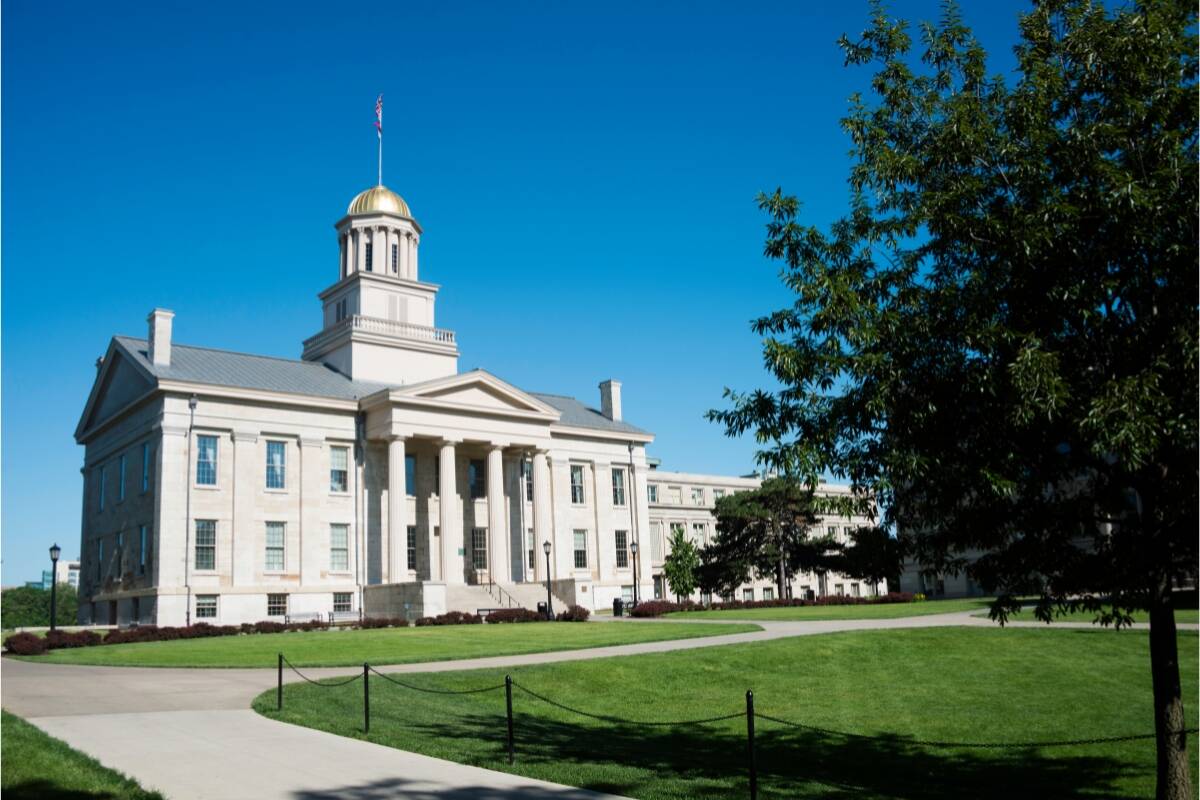
As an Iowa homeowner, choosing the best grass seed for your lawn can be tricky. Some maps put the entire state above the Transition Zone, and others draw the boundary through the Southern part of the state. The Hawkeye State’s mixed climate calls for cool-season grass or one that grows well in the Transition Zone.
To help make choosing the right grass easier, let’s talk about why the transition zone is tricky, the difference between cool- and warm-season grasses, and the six best grass seeds for Iowa lawns.
What is the Transition Zone?
Experts split the U.S. into regions based on the average annual temperatures and humidity. In the areas designated as “cool,” cool-season turfgrasses are recommended. In the “warm” areas, warm-season grasses are the best choice. But the area in the Central United States is tricky.
In the Transition Zone, temperate Northern and subtropical Southern climates meet, creating unique weather patterns–and making growing grass difficult.
Unlike the North and South, there isn’t an ideal group of turfgrasses adapted to the climate. The summers are often too warm to grow cool-season grasses, and winter weather is too cold for warm-season grass types.
Cool-Season Grass vs. Warm-Season Grass
Turfgrass is classified as either cool-season or warm-season, depending on the climate it prefers. Cool-season grasses grow across the northern part of the United States. They have adapted to cold winters and can survive being buried under snow.
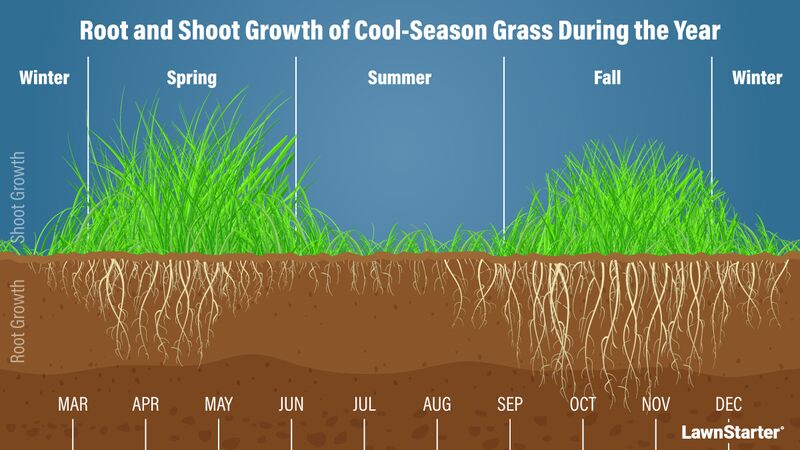
Cool-season varieties green up in the spring once temperatures hit 40 degrees Fahrenheit, and they grow actively in temperatures ranging between 65 to 75 degrees Fahrenheit. They are not heat-tolerant and grow slowly during the summer, sometimes going dormant.
These grasses need extra water to keep them green during hot months. Once the temperature starts to dip again in the fall, growth picks up until October or November, and they go dormant for the winter.
Common cool-season grasses:
- Annual ryegrass (Lolium multiflorum)
- Creeping bentgrass (Agrostis palustris)
- Creeping red fescue (Festuca rubra var. rubra)
- Kentucky bluegrass (Poa pratensis)
- Perennial ryegrass (Lolium perenne)
- Tall fescue (Festuca arundinacea)
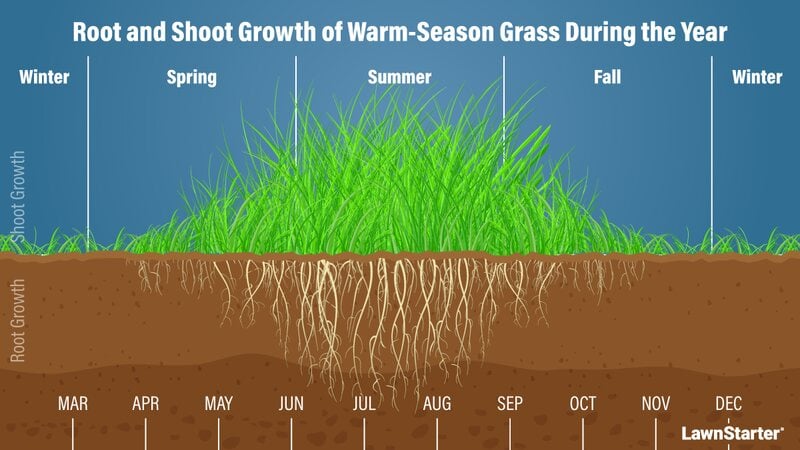
On the other hand, warm-season grasses have adapted to the summer heat of southern climates. They thrive in blazing temperatures, even without supplemental irrigation, but quit growing earlier in the fall for a longer winter dormancy.
Common warm-season grasses:
- Bahiagrass (Paspalum notatum)
- Bermudagrass (Cynodon dactylon)
- Buffalograss (Buchloe dactyloides), carpetgrass (Axonopus affinis)
- Centipedegrass (Eremochloa ophiuroides)
- St. Augustinegrass (Stenotaphrum secundatum)
- Zoysiagrass (Zoysia japonica)
6 Best Grass Seeds for Iowa Lawns
Different grass seed recommendations are depending on where you live in the Hawkeye State.
- Homeowners in Northern Iowa should plant cool-season grass.
- Homeowners in Southern Iowa can plant warm- or cool-season grass, depending on their needs and landscape.
Cool-Season Grasses for Iowa Lawns
Kentucky Bluegrass (Poa pratensis)
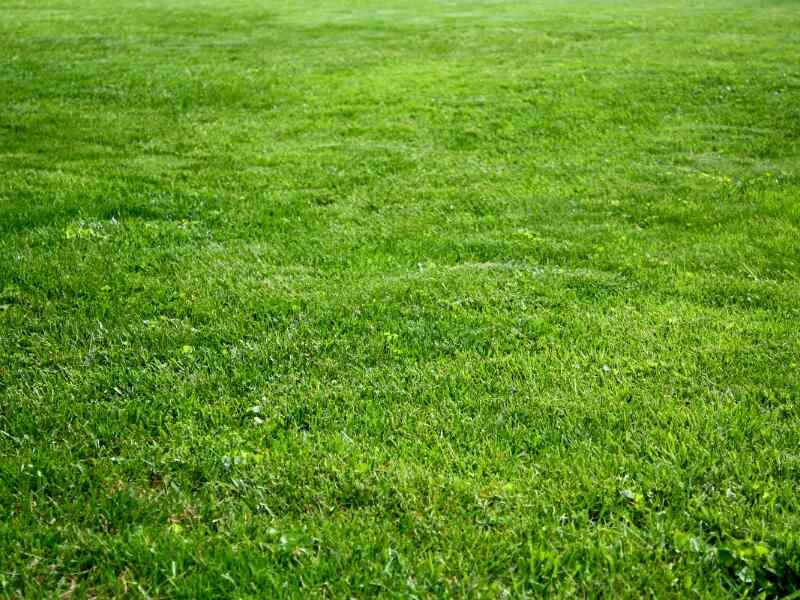
Our number one grass seed pick for Iowa is the beloved Kentucky bluegrass (KBG). This cool-season grass creates a dense, dark green lawn with phenomenal winter hardiness.
Kentucky bluegrass is less heat-tolerant than warm-season grasses, which means you will need to water it often to keep it green in the summer. It grows well in full sun to partial shade and has excellent wear tolerance, making it a solid choice for homes with pets or kids.
Unfortunately, Kentucky bluegrass is high-maintenance and requires frequent mowing and fertilization.
- Classification: Cool-season grass
- Spreads by: Rhizomes
- Shade tolerance: Low to moderate; prefers full sun
- Drought tolerance: Moderate; will survive by going dormant
- Foot traffic tolerance: Low to moderate; recovers well
- Soil pH: 6-7
- Soil type: Fertile; good drainage
- Maintenance needs: Moderate mowing frequency; high fertilization needs
- Mowing height: 2-3 inches
- Potential for disease: Moderate to high; prone to necrotic ring spot, summer patch, dollar spot, leaf spot, snow molds, fairy rings, red thread, rust, and powdery mildew.
- Other notes: Produces a dense lawn under ideal conditions; shade tolerance, drought resistance, etc., vary widely by cultivar; newer cultivars are generally hardier, more resistant to disease, etc.; mow taller in summer; typically mixed with other grasses in home lawns
Grass Seed Options:
– Jonathan Green (11970) Blue Panther Kentucky Bluegrass Grass Seed (3 lbs.)
– SeedRanch Midnight Kentucky Bluegrass Seed (5 lbs.)
– Jacklin Seed – Biltmore Blue Blend – 100% Kentucky Bluegrass (5 lbs.)
Perennial Ryegrass (Lolium perenne)
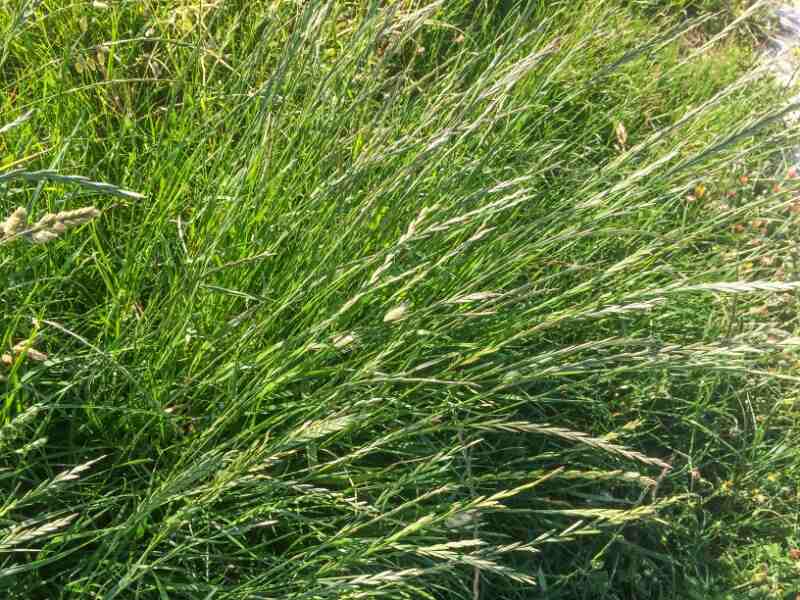
Another great cool-season option is the medium to dark green perennial ryegrass. This bunchgrass is known for its quick germination (it sprouts in under a week) and rapid establishment. If you need a lawn quickly, perennial ryegrass is a top contender.
It feels lovely on bare feet with its soft-to-the-touch blades and demonstrates excellent foot traffic tolerance. However, it doesn’t self-repair if it becomes thin or patchy and you will need to reseed. Perennial ryegrass is also less cold-hardy. If temperatures drop below 30 degrees Fahrenheit for long periods, it may thin.
- Classification: Cool-season grass
- Spreads by: Bunch-type grass
- Shade tolerance: Low; prefers full sun
- Drought tolerance: Low; summer dormancy in some areas
- Foot traffic tolerance: High; recovers poorly
- Soil pH: 6-7
- Soil type: Fertile; good drainage
- Maintenance needs: Moderate mowing and fertilization requirements; thatch is not significant
- Mowing height: 2-3 inches
- Potential for disease: High; susceptible to gray leaf spot, dollar spot, brown patch, red thread, rust, and pythium blight
- Other notes: Often mixed with Kentucky bluegrass and fine fescue; excellent striping ability; germinates rapidly for a temporary lawn
Grass Seed Options:
– Outsidepride Perennial Ryegrass Seed (5 lbs.)
– Eretz ProTurf Perennial Ryegrass Fine Lawn Seed (choose your size)
Tall Fescue (Festuca arundinacea)

Tall fescue grass is a medium to dark green bunchgrass that grows well in full sun but handles partial shade, preferring light to moderate afternoon shade.
As a bunchgrass, tall fescue grows in upright clumps that send off vertical shoots to propagate itself. These tillers create identical clumps of grass, naturally spreading to fill bare spots across your lawn. Tall fescue also puts roots two to three feet into the ground, making the grass drought-tolerant.
If you’re looking for a low-maintenance lawn that doesn’t require supplemental irrigation, tall fescue should be high on your list.
- Classification: Cool-season grass
- Spreads by: Bunch-type grass
- Shade tolerance: Moderate
- Drought tolerance: Moderate
- Foot traffic tolerance: Moderate; recovers poorly
- Soil pH: 5.5-6.5
- Soil type: Fertile; good drainage; adaptable
- Maintenance needs: Frequent mowing; does not produce significant thatch
- Mowing height: 2-4 inches
- Potential for disease: Low to moderate; prone to brown patch, seedling disease, and leaf spot
- Other notes: Reseed periodically to repair thinning patches or bare spots; look for newer “turf-type” tall fescue (TTTF) cultivars; seed blends with more than one TTTF type offer the best chance for a strong lawn
Grass Seed Options:
– Triple-Play Tall Fescue Grass Seed Blend (5000 sq ft)
– Eretz Kentucky 31 K31 Tall Fescue Grass Seed (choose your size)
– Pennington The Rebels Tall Fescue Grass Seed Mix (7 lb.)
Warm-Season Grasses for Iowa Lawns
Bermudagrass (Cynodon dactylon)
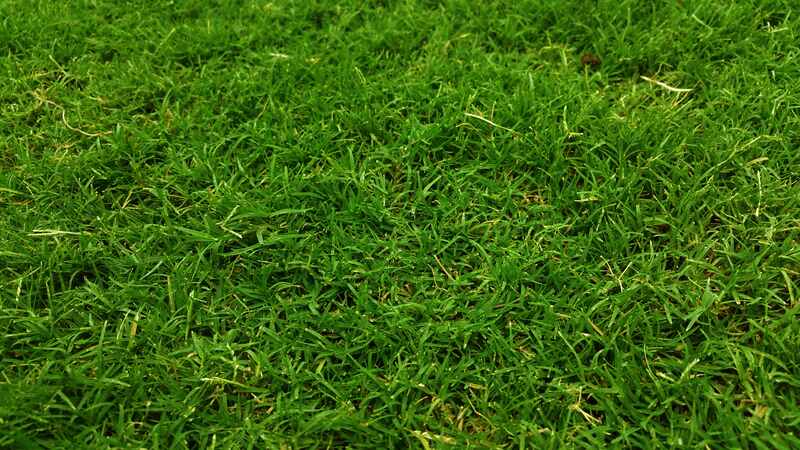
Bermudagrass is a non-native plant that has gained popularity in warmer climates to create beautiful lawns, golf course fairways, and sports fields. It needs full sun but has excellent drought tolerance and holds up well under heavy foot traffic. Bermudagrass also recovers quickly if damaged.
Improved common varieties and hybrid Bermudagrass make excellent residential lawns. The common variety produces a lower quality lawn than fine-textured hybrids, but they require less maintenance. Hybrid Bermudagrass needs mowing once or twice a week, regular irrigation, and fertilization several times a year.
- Classification: Warm-season grass
- Spreads by: Stolons and rhizomes
- Shade tolerance: Low; thrives in full sun
- Drought tolerance: High
- Foot traffic tolerance: High
- Soil pH: 6-6.5
- Soil type: Tolerates most soil types
- Maintenance needs: Needs frequent mowing due to fast growth rate; develops thatch easily; needs regular fertilization
- Mowing height: 1-2 inches
- Potential for disease: Good disease resistance; can develop spring dead spot, root decline, dollar spot, leaf spot, large patch, and sheath spot
- Other notes: Good tolerance to salt; often grown in coastal areas
Grass Seed Options:
– Pennington Bermudagrass Bare Spot (5 lb. bag)
– Pennington Smart Seed Bermudagrass Mix (8.75-lb. bag)
– Scotts Turf Builder Bermudagrass (10-lb. bag)
– Hancock Seed Co. Bermudagrass (50-lb. bag)
Zoysiagrass (Zoysia japonica)
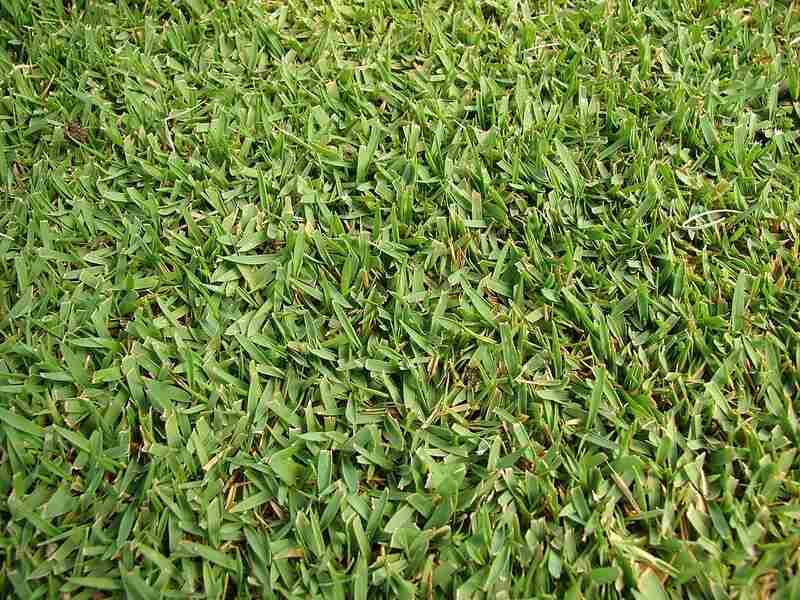
Zoysiagrass comes in strong on this list because of its cold tolerance. It handles the lowest winter temps with the fewest adverse effects of all warm-season grasses. It can also grow in some shade and sustains a fair amount of foot traffic.
The coarse-textured, light green grass germinates slowly, so it is often started by plugs or laying sod, but you can still seed it. As a warm-season grass, it loves the summer heat, so you’ll want to sow seed in the late spring.
Zoysia develops thatch quickly, so it needs to be power-raked or dethatched every year or two. When left on the soil surface, thatch increases insect and disease problems and may stop water, nutrients, and air from getting into the soil.
- Classification: Warm-season grass
- Spreads by: Stolons and rhizomes
- Shade tolerance: Moderate
- Drought tolerance: Moderate to High
- Foot traffic tolerance: High; recovers slowly
- Soil pH: 6-6.5
- Soil type: Well-draining; some cultivars are more tolerant of a wide range of soils than others
- Maintenance needs: Moderate; low nitrogen fertilization requirements; prone to thatch
- Mowing height: 1-2.5 inches
- Potential for disease: Good disease tolerance; can develop large patch, root decline, spring dead spot, rust, curvularia, and leaf spot
- Other notes: Moderately salt tolerant; mow at a taller height if the grass is growing in partial shade
Grass Plug and Seed Options:
– Zoysia Plugs (50 Large Grass Plugs)
– Zoysia Plugs (50 Full & Lush Grass Plugs)
– Zoysia Plugs (100 Plugs)
– Zoysia Emerald Grass Seeds (1/8 lb. of seeds)
– Zenith Zenith Grass Seeds (1/8 lb. of seeds)
Buffalograss (Bouteloua dactyloides)
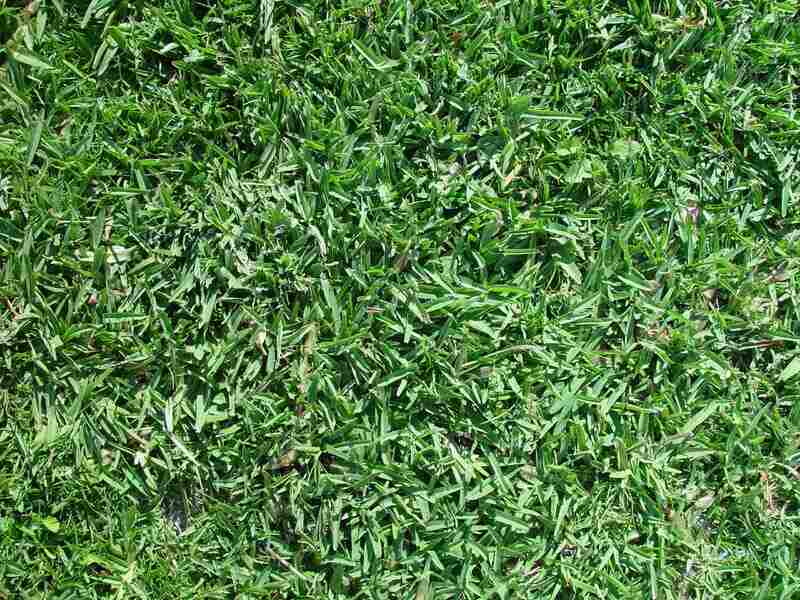
Buffalograss is native to the United States and has been historically used for grazing pastures. Still, its low-maintenance needs, good drought tolerance, and cold resistance make it popular with homeowners looking for an easy-care lawn.
Don’t let the pasture part fool you. Buffalograss still offers the traditional turf aesthetic. The fine leaf blades form a soft, dense sod that is great for lawns. Since it is a pasture grass, it requires minimal mowing and fertilization. However, buffalograss grows slowly in shade and will start entering winter dormancy at the first sign of frost.
- Classification: Warm-season grass
- Spreads by: Stolons
- Shade tolerance: Low
- Drought tolerance: High
- Foot traffic tolerance: Low to moderate
- Soil pH: 6.5-7.5
- Soil type: Native soils, not sandy soils
- Maintenance needs: Low fertilizer and mowing needs. Requires weed control.
- Mowing height: 2-4 inches
- Potential for disease: Good tolerance against diseases; prone to bipolaris leaf spot
- Other notes: Not a good choice for saline or sandy soils
Grass Seed Options:
– Everwilde Farms Buffalograss Seeds (1 lb. of seeds)
– Scotts Pursue Buffalograss with Natural Seed (1 lb. of seeds)
– Outsidepride Perennial Buffalo Grass Seed (2 lb. of seeds)
How To Choose the Best Grass Seed for Your Iowa Lawn
All six grasses are fantastic for an Iowa lawn, but you shouldn’t just choose one willy-nilly. Each of the different grasses has different characteristics and thrives in different conditions. Consider sun exposure, foot traffic, and maintenance needs when choosing a cultivar for your landscape.
- How much sun hits your yard? If your yard receives full sun for most of the day, choose Kentucky bluegrass, perennial ryegrass, Bermudagrass, or buffalograss. If your landscape is shaded by large trees or neighboring houses, opt for tall fescue or Zoysiagrass.
- Is your yard a playground, or is there limited foot traffic? Match the activity in your yard to a grass type that can handle the foot traffic. If your backyard looks more like a racetrack with kids and dogs zooming through it all the time, opt for tall fescue, perennial ryegrass, Bermudagrass, or Zoysiagrass.
- How much do you enjoy yard work? Be honest about how much time and effort you want to put into your yard work. If you don’t mind mowing, fertilizing, and weeding a high-maintenance cultivar like Kentucky bluegrass, perennial ryegrass, Bermudagrass, or Zoysiagrass is for you. On the flip side, if yard work sounds miserable choose buffalograss or tall fescue.
Opting for a Grass Seed Mix
Grass seed mixtures are common across the Midwest, but whether you should use one depends on the type of grass you’ve decided to grow.
Cool-season grass blends are a great option. They contain two or three types of grass, giving you the characteristics of each cultivar. Blends can grow well in mixed landscapes with sunny and shady areas, and they’re insect-, disease-, and drought-resistant.
Pro tip: Don’t blend cool-season and warm-season grass seeds. You’ll end up with a lawn that resembles a patchwork quilt of different colors and textures.
When Should I Plant Grass Seed In Iowa?
Whether you’re overseeding an existing lawn or starting a new lawn from scratch, you want to lay seed just before the active growing season. This gives the seed time to germinate, helping it establish deep roots.
- Seed cool-season turfgrasses from August 15 to October 1 when soil temperatures range from 50 to 65 degrees Fahrenheit. This gives the grass six weeks of growth before the first fall frost.
- Sew warm-season turfgrasses between April 15 and June 10 when soil temperatures hover about 50 degrees Fahrenheit. This gives the grass a few weeks to a month of solid growth before the summer temperatures soar.
Pro tip: Alternatively, you can sew cool-season grasses in the early spring or seed warm-season cultivars in the early fall.
FAQ About the Best Grass Seed for Iowa Lawns
When you plant grass seed depends on your turfgrass. Plant cool-season grasses in the fall after hot summer temperatures subside but before the first fall frost. Plant warm-season grass in the late spring or early summer. If you’re in the Transition Zone, follow the timing for your grass type.
Warm-season turfgrasses grow in the South. They prefer hot temperatures but don’t handle winters and snow very well. Cool-season grasses grow in the Northern United States. They prefer temperate summers and can survive cold winters.
At the latest, sow cool-season grass seed six weeks before your area’s first anticipated hard freeze. Warm-season grasses are best if planted about eight weeks before an expected hard freeze. This timing gives the grass about a month to sprout and start putting down roots before it goes dormant for the winter.
Need Help With Your Iowa Lawn?
We understand that it’s never fun to be stuck in the middle, which certainly applies to Iowa homeowners straddling the edge of the Transition Zone. If you need help with your lawn, let LawnStarter connect you with a local landscaping professional, so that you can have a yard that makes your neighbors green with envy.
LawnStarter participates in the Amazon Services LLC Associates Program, an affiliate advertising program. LawnStarter earns revenue from products promoted in this article.
Main Photo Credit: dosecreative / Canva Pro / License